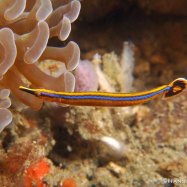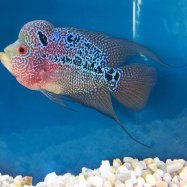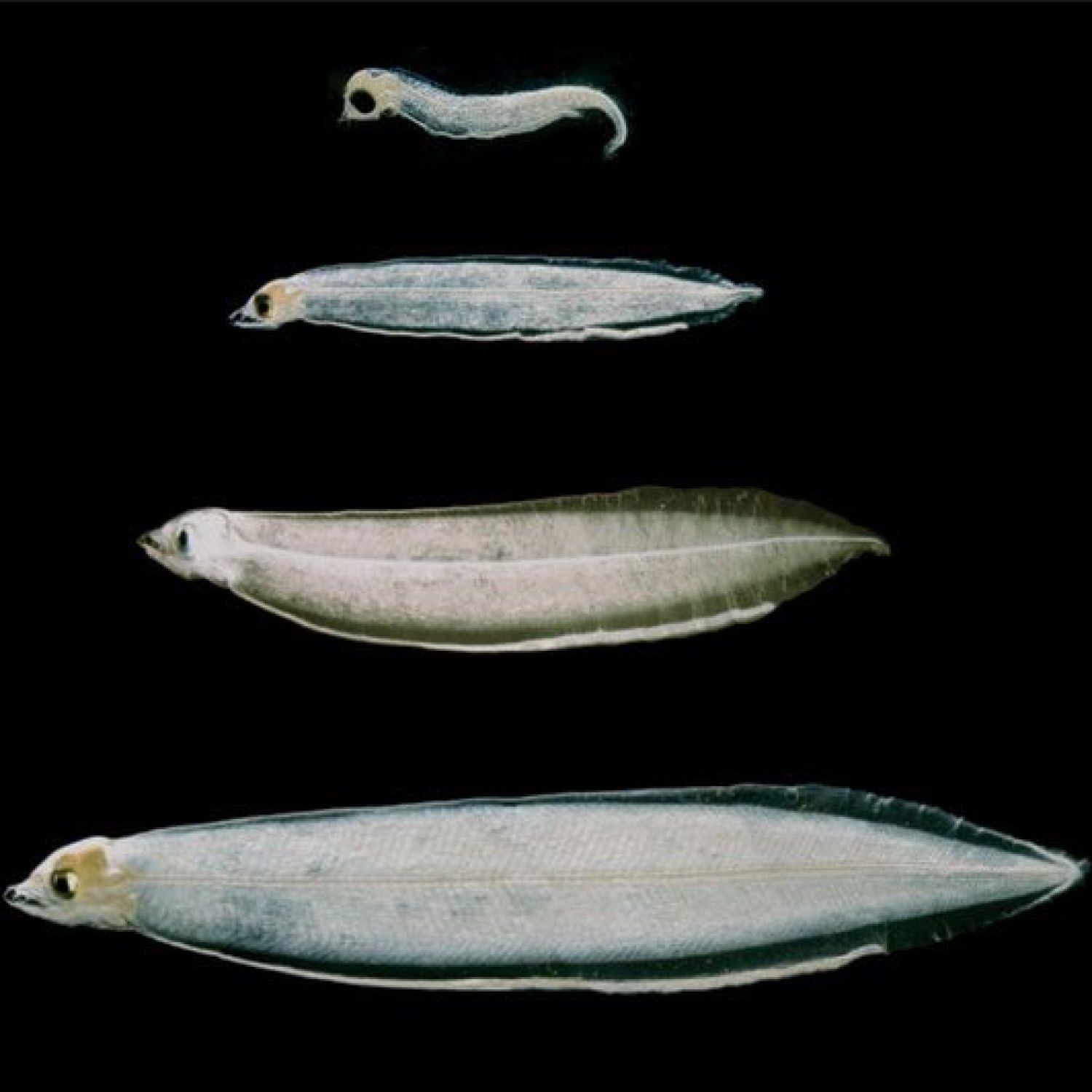
Leptocephalus
Varies
Meet the mysterious Leptocephalus! These ocean-dwellers are notoriously elusive, with varying lengths and eel-like bodies. Belonging to different families and found in oceans worldwide, catching a glimpse of a Leptocephalus is a rare treat. Keep your eyes peeled when diving and you may be lucky enough to spot one! #Leptocephalus #oceanlife #mysterious
Animal Details Summary:
Common Name: Leptocephalus
Kingdom: Animalia
Habitat: Marine
The fascinating world of Leptocephalus: A mysterious eel-like creature that roams the world's oceans
The world's oceans are home to a variety of unique and fascinating creatures, and one such creature that often goes unnoticed is the Leptocephalus. With its eel-like body and transparent coloration, this animal is unlike any other fish found in the oceans. But what exactly is a Leptocephalus? What makes it stand out from other marine animals? Let's dive deeper into the world of Leptocephalus and uncover its secrets.The Leptocephalus: A Closer Look
Scientifically known as Leptocephalus, this animal belongs to the Kingdom Animalia and the Phylum Chordata Leptocephalus. It is classified under the Class Actinopterygii and the Order Anguilliformes, which includes all the eel-like fishes. The family of Leptocephalus, however, is a little more complicated. This is because it is not just one specific species, but rather a group of larvae from various fish families. Interestingly, these larvae have the common name of Leptocephalus, making the scientific name the same as its common name.
Habitat and Distribution
One of the most fascinating things about Leptocephalus is its distribution. These larvae can be found in different oceans around the world. Some species have a more specific habitat, while others are found worldwide. The Leptocephalus larvae are known to inhabit the upper layers of the ocean, usually about 200 meters below the surface. They are most commonly found in tropical and subtropical waters, where they can easily blend in with the transparent water Longnose Gar.
Feeding and Adaptations
As larvae, Leptocephalus is carnivorous, feeding on various plankton species that float in the ocean. They have adapted to their feeding method by developing long, sharp jaws, which allow them to catch their prey easily. They also have well-developed lateral lines that help them detect the vibrations of their prey. One of their most unique adaptations is their transparent coloration. This helps them camouflage and avoid detection by predators, making them excellent hunters in the ocean.
Life Cycle and Growth
Leptocephalus undergoes a unique metamorphosis during its life cycle. They begin as eggs, which later hatch into larvae. During this stage, the larvae are almost transparent and have a flat, leaf-like shape. As they grow, they develop the eel-like body that is characteristic of adult Leptocephalus. However, unlike other fish, the Leptocephalus larvae do not have scales, fins, or even a functional digestive system. This makes them entirely dependent on their yolk sac for survival.
As they grow, Leptocephalus larvae will eventually go through a process called 'tarponization.' This is when the larvae undergo physical changes to their body, allowing them to swim more efficiently and find a suitable habitat. Once fully grown, the Leptocephalus larvae transform into their adult form, whether it be an eel, flounder, or even a manta ray. The duration of this entire cycle can vary, with some larvae transforming in a matter of weeks, while others can take months or even years.
The Mysteries of Leptocephalus
Leptocephalus larvae have puzzled scientists and marine biologists for years, with many mysteries still surrounding them. One of the most intriguing questions is their mode of reproduction. While it is clear that they are not a specific species but rather larvae from different families, the exact method of their breeding is still unknown. Another mystery is their migration patterns. Since they can be found in various oceans, it is not yet clear how they travel and move between the different oceans and seas.
The Favorable Role of Leptocephalus in its Habitat
Despite its elusive nature and mysterious life cycle, the Leptocephalus plays a crucial role in its marine habitat. As larvae, they are a vital part of the ocean's food chain, providing a food source for many marine animals. Their transparent coloration also serves as an efficient way for them to avoid predators, ensuring their survival. As they grow into adult forms, they continue to play an important role in maintaining the balance of the marine ecosystem, serving as predators themselves and keeping other species in check.
The Future of Leptocephalus
The future of Leptocephalus may seem uncertain, with the many mysteries surrounding its existence. However, with the advancement of technology and research, scientists are making significant strides in understanding this creature. In recent years, there has been an increase in the study of Leptocephalus larvae, leading to new discoveries and a better understanding of their role in the marine ecosystem. By continuing to study and protect this unique animal, we can ensure its survival for generations to come.
A Final Note
In the vast ocean, there are still many mysteries waiting to be uncovered. The Leptocephalus is just one of the many fascinating creatures that roam the depths of the ocean, reminding us of the diverse and incredible world we live in. As we continue to explore and uncover the secrets of the ocean, let us not forget to protect and preserve the habitats of these creatures for future generations to admire and learn from.

Leptocephalus
Animal Details Leptocephalus - Scientific Name: Leptocephalus
- Category: Animals L
- Scientific Name: Leptocephalus
- Common Name: Leptocephalus
- Kingdom: Animalia
- Phylum: Chordata
- Class: Actinopterygii
- Order: Anguilliformes
- Family: Various
- Habitat: Marine
- Feeding Method: Carnivorous
- Geographical Distribution: Worldwide
- Country of Origin: N/A
- Location: Oceans
- Animal Coloration: Transparent
- Body Shape: Eel-like
- Length: Varies
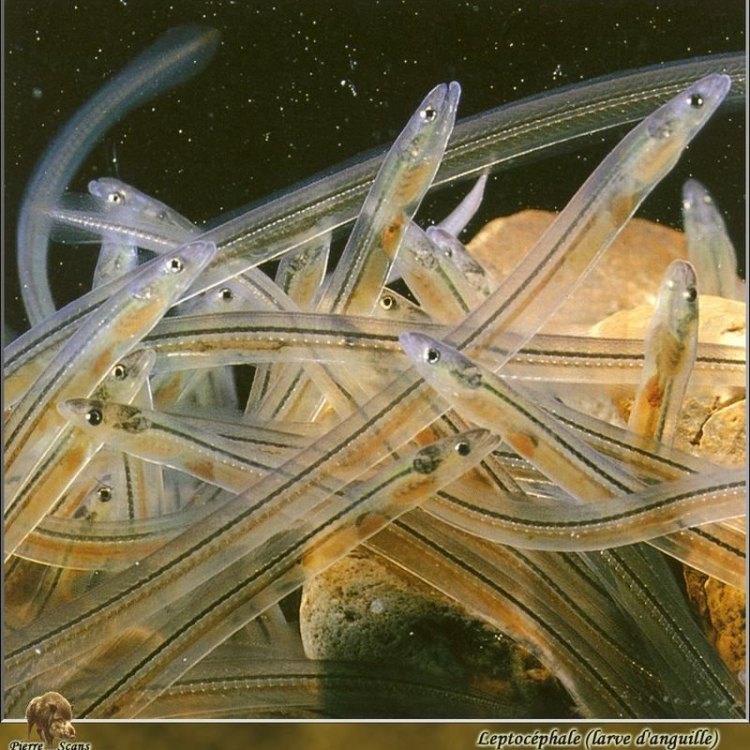
Leptocephalus
- Adult Size: Varies
- Average Lifespan: Varies
- Reproduction: Spawning
- Reproductive Behavior: N/A
- Sound or Call: N/A
- Migration Pattern: Yes
- Social Groups: Varies
- Behavior: N/A
- Threats: Predation, habitat loss
- Conservation Status: Varies
- Impact on Ecosystem: Varies
- Human Use: Food, research
- Distinctive Features: Transparent body, elongated shape
- Interesting Facts: Juvenile form of eels
- Predator: Predatory fish, birds, marine mammals
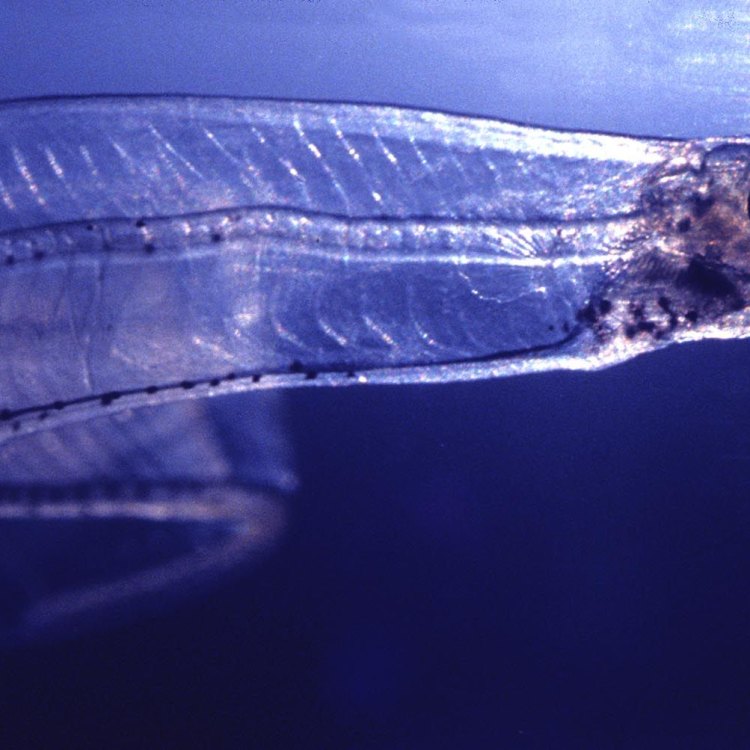
Leptocephalus
The Mysterious Life of Leptocephalus: From Transparent Juvenile to Vital Ecosystem Component
In the depths of the ocean, an unusual creature drifts with the currents in its larval stage, completely transparent and almost ghost-like in appearance. This is the Leptocephalus, a fascinating organism that goes through a unique transformation to become one of the most vital components of the marine ecosystem.Leptocephalus is the larval form of many eel species, and it is quite different from its adult counterpart. While the adult eel is long and snake-like, the larval form is thin, flat, and transparent, resembling a leaf or a ribbon PeaceOfAnimals.Com. It is this elongated shape that gives them their name, which is derived from the Greek words "lepto" meaning thin, and "kephale" meaning head.
The mysterious nature of Leptocephalus is not limited to its appearance alone. Their life cycle is still not fully understood, and studying them in their natural habitat is a challenging task. However, with advancements in technology and research, we are slowly uncovering the secrets of this enigmatic creature.
The Transformation Process
Leptocephalus is formed when adult eels, depending on the species, migrate from freshwater rivers to the ocean to spawn. The fertilized eggs then hatch into tiny transparent larvae, no bigger than a few millimeters. As they grow, they continue to drift with the currents in the open ocean, a journey that can last up to a year or more.After reaching a certain size, they undergo a remarkable metamorphosis, transforming into their adult form. During this process, known as leptocephalus-to-eel transformation, they develop their distinct shape and gain pigmentation, becoming harder to spot in the ocean Lakeland Terrier. Once the transformation is complete, they start to migrate back to the freshwater rivers where they spawn and eventually die.
Varying Characteristics and Behavior
One of the most intriguing aspects of Leptocephalus is its variability. They vary in size and lifespan, with different species having different growth rates and average lifespans. Some can grow up to a few centimeters, while others can exceed one meter. Similarly, their lifespan can range from a few months to a year or more.Their reproductive behavior is also quite diverse. Some species spawn in the coastal areas, while others travel to the open ocean. The behavior of adults during spawning is yet to be fully documented, and little is known about their reproductive behavior in general.
When it comes to social patterns, Leptocephalus has an equally unpredictable nature. While some live solitary lives, others form groups or schools. These groups can consist of individuals of the same or different species, making their behavior even more enigmatic.
Role in the Ecosystem
Despite their small size, Leptocephalus plays a crucial role in the marine ecosystem. They are a vital source of food for a wide range of predators, including predatory fish, birds, and marine mammals. In turn, they contribute to the transfer of energy within the food chain.Furthermore, their migration patterns play a significant role in nutrient cycling in the ocean. As they move from freshwater rivers to the ocean and back, they transport nutrients to different parts of the ocean, influencing the growth of plankton and other organisms along their route. This, in turn, has an impact on the entire marine ecosystem, making Leptocephalus an essential link in the chain of life in the ocean.
Threats and Conservation Status
Like many other species, Leptocephalus faces various threats in its natural habitat. The most significant threat comes from predation, where they are targeted by a range of predators at different stages of their life cycle. This includes larger fish, birds, and marine mammals, making survival for the Leptocephalus a challenging task.Another significant threat is habitat loss, as human activities continue to disrupt the marine environment. Dams, pollution, and overfishing are just some of the factors that can affect the migration patterns and reproductive behavior of adult eels, ultimately impacting the survival of Leptocephalus.
The conservation status of Leptocephalus varies depending on the species. Some are considered vulnerable, while others are listed as data deficient, highlighting the need for further research and conservation efforts.
The Human Connection
Leptocephalus may seem like an insignificant organism to us, but they do have some human relevance. In some countries, they are considered a delicacy and are used in cuisine, mainly in Japanese and Korean dishes. They are also used in scientific research, especially in studying deep-sea ecosystems and uncovering the secrets of their transformation process.However, with the decline in eel populations due to overfishing and habitat destruction, their use in these industries is being closely monitored and regulated.
Distinctive Features and Interesting Facts
The transparent body and elongated shape make Leptocephalus stand out from other larval fish. Their transparency allows for an efficient camouflage, making them almost invisible in the open ocean. The elongated shape, on the other hand, helps them drift with the ocean currents, conserving energy during their long journey.While Leptocephalus itself may not seem like the most exciting creature, it has some interesting facts that make it quite remarkable. Along with being the larval form of eels, Leptocephalus is also referred to as a "leptocephalid", indicating its unique scientific classification. Moreover, they are believed to be one of the longest-living larvae in the ocean, with some species living for over a year.
The Cycle of Life Continues
In the vast ocean, a tiny, transparent creature drifts along, playing a vital role in the marine ecosystem. Its journey will be fraught with dangers, but it will also contribute to the circle of life in the ocean. Leptocephalus may be a small creature, but its impact on the ecosystem is significant, reminding us of our interconnectedness with all living beings. As we continue to uncover its mysteries, we must also work towards preserving its existence for generations to come. Only then can the mesmerizing transformation of Leptocephalus continue to intrigue and inspire us.
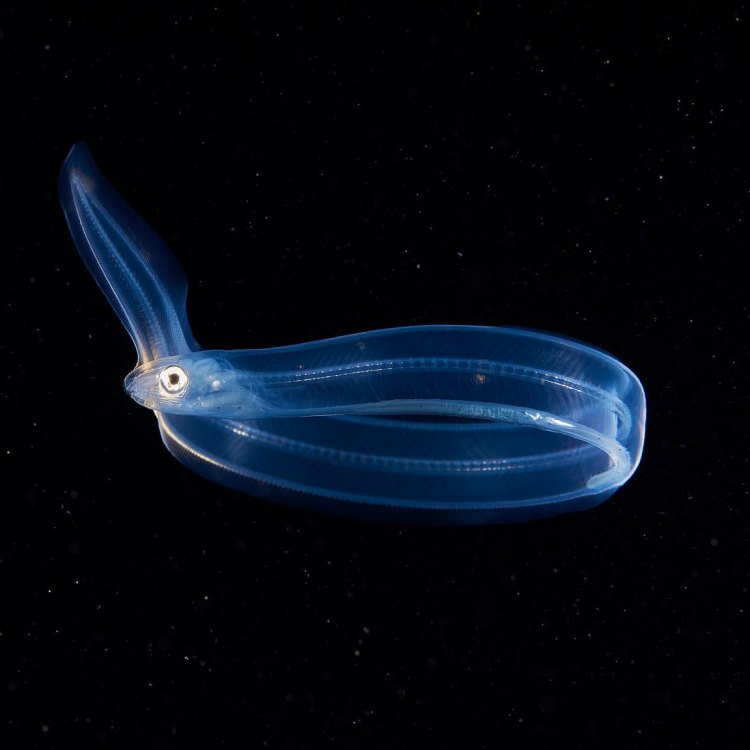
The fascinating world of Leptocephalus: A mysterious eel-like creature that roams the world's oceans
Disclaimer: The content provided is for informational purposes only. We cannot guarantee the accuracy of the information on this page 100%. All information provided here may change without prior notice.




